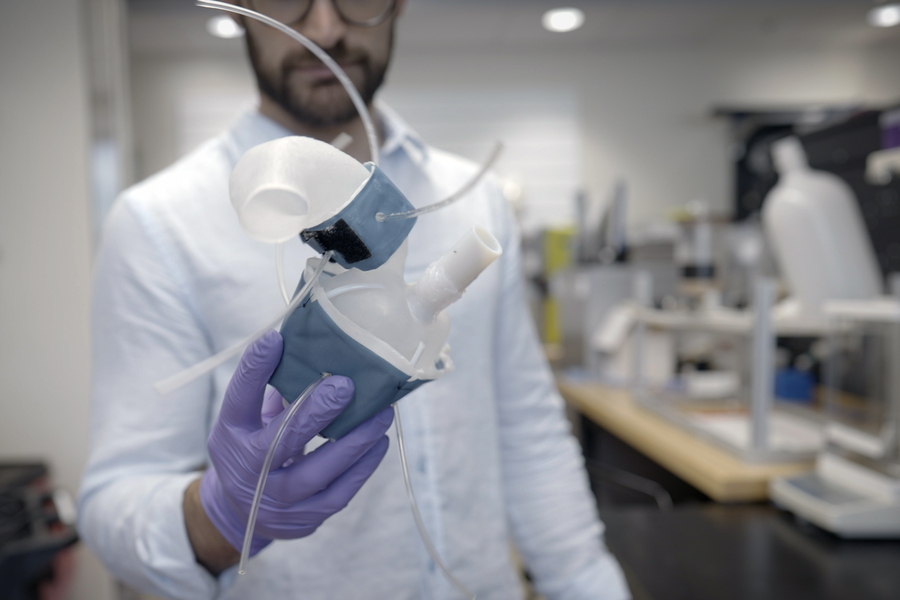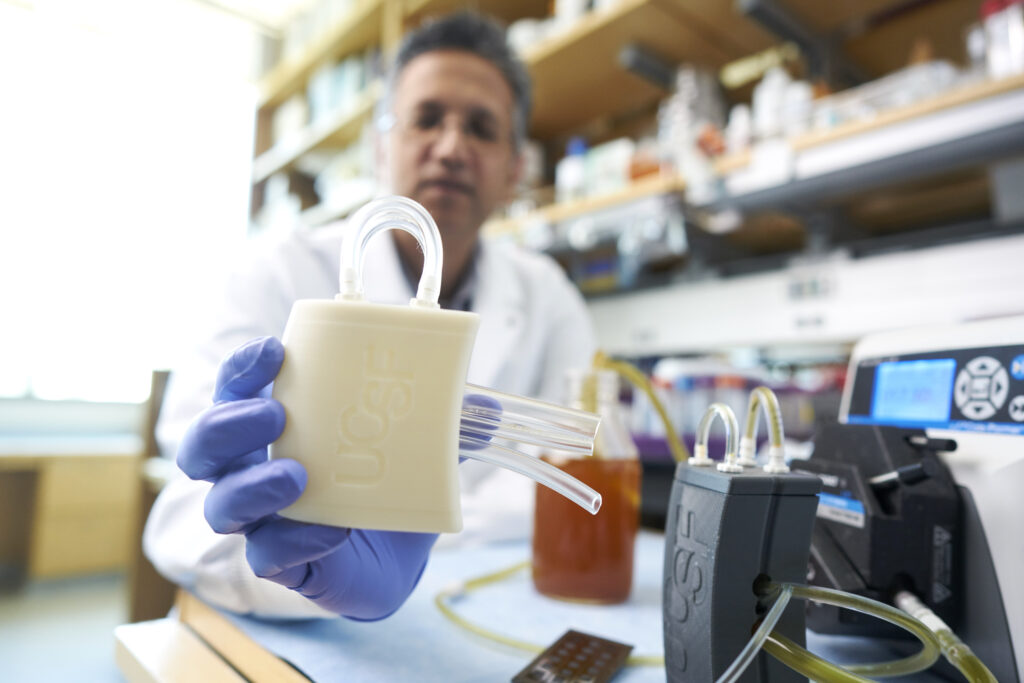When it comes to human hearts, one size does not fit all, as each organ has a unique shape, size, and beat.
Engineers at MIT are working to help doctors better understand each heart’s precise differences by creating 3D-printed, patient-specific robotic hearts that look and function like real ones. The goal: give patients with heart issues more tailored treatment plans.
“All hearts are different,” Luca Rosalia, a graduate student in the MIT-Harvard Program in Health Sciences and Technology who worked on the robotic heart, explained in an MIT News press release. “There are massive variations, especially when patients are sick. The advantage of our system is that we can recreate not just the form of a patient’s heart, but also its function in both physiology and disease.”
In a recent study, the devices were made using medical images of 15 patients diagnosed with aortic stenosis, a condition that causes the heart to pump harder to push blood through a narrowed aortic valve.
The scans were converted into three-dimensional computer models that researchers printed with a polymer-based ink that can “squeeze and stretch, similarly to a real beating heart.” The procedure can also print a patient’s aorta, which is the artery that carries blood away from the heart to the rest of the body.

The result is a “soft, flexible shell in the exact shape of the patient’s own heart.” This model can mimic the heart’s pumping action with “fabricated sleeves similar to blood pressure cuffs that wrap around a printed heart and aorta.” To picture this, they are described to have an interior pattern similar to bubble wrap.
The engineers also designed another sleeve to “constrict the vessel” to mimic aortic stenosis.
“Being able to match the patients’ flows and pressures was very encouraging,” MIT engineering professor Ellen Roche said. “We’re not only printing the heart’s anatomy, but also replicating its mechanics and physiology. That’s the part that we get excited about.”
To test the robotic hearts even further, the team worked to replicate the interventions that patients went through to see how the printed heart and vessels responded compared to the real-life hearts. They found the results in the printed hearts showed similar improved flows as the actual patients after their surgical implants.
MIT notes that their procedure could be used as a trial run, testing different solutions with the printed model to see which performs best before treating the patient, and be “realistic platforms” for research labs to see how different therapies work for different types of heart disease.
“Patients would get their imaging done, which they do anyway, and we would use that to make this system, ideally within the day,” said co-author Christopher Nguyen. “Once it’s up and running, clinicians could test different valve types and sizes and see which works best, then use that to implant.”
The hope is that these 3D-printed heart replicas can not only test and tailor treatments, but also identify the best options for those with “unique and challenging cardiac geometries.”
RELATED: Learn How to Save a Life With Hands-Only CPR












